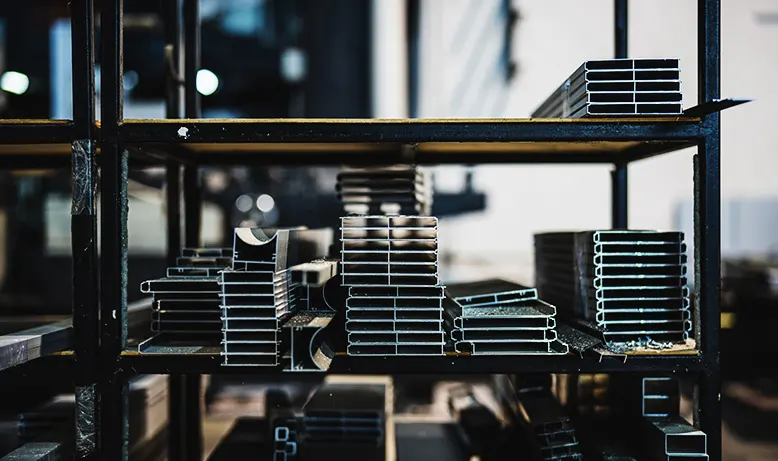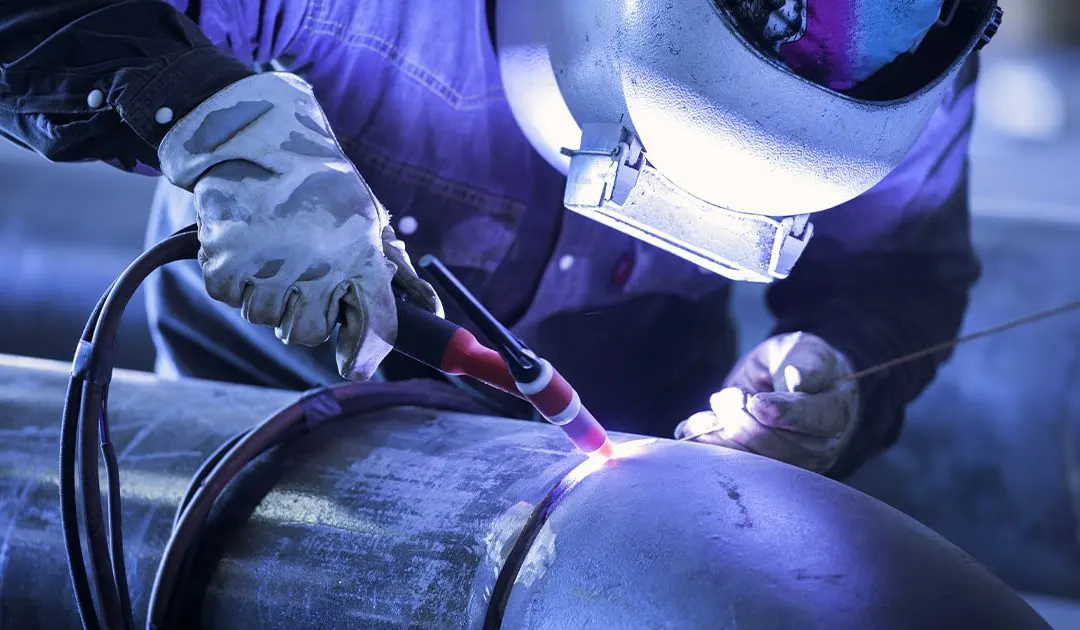Learn the basics of welding and get started on your welding journey with this comprehensive guide for beginners. From equipment to techniques, this guide covers everything you need to know to get started.
What is welding and why is it significant?
By heating surfaces to melting points and applying pressure, welding fuses metal components together. This vital manufacturing technology is used in construction, automobiles, ships, and aircraft. This guide covers welding fundamentals and its significance. Numerous welding techniques exist, each with unique qualities, benefits, and drawbacks. Principal kinds of welding: - Shielded metal arc welding (SMAW) Gas metal arc welding (GMAW) Gas tungsten arc welding (GTAW) Flux-cored arc welding (FCAW) Submerged arc welding (SAW) Different types of welding are used based on metal thickness, required strength, and welding position. Safety is crucial in welding due to high temperatures, sparks, and toxic gases. Welders must wear protective gear like gloves, goggles, and masks. Good ventilation, welding screens, and adherence to equipment safety instructions are essential. Welding is a fundamental skill in today's world, crucial to various sectors. It enables more robust, secure, and long-lasting structures. Main advantages of welding: - More robust and long-lasting structures Lower expenses and increased effectiveness Better corrosion resistance, productivity, and flexibility In conclusion, welding is vital in modern manufacturing. Understanding welding fundamentals, various forms, and safety importance is essential for anyone pursuing a welding career or using welding in projects. As technology advances, welding's significance will only grow, making it a valuable skill to possess.
Requisite welding tools and supplies
For safe and effective welding, specialized tools and materials are required. This guide examines essential welding supplies and tools for welders. The power source supplies energy to heat and melt metal, and can be AC or DC. Stick welding uses AC, while TIG and MIG welding prefer DC for adaptability. The welding torch provides filler material and heat to the metal. Different types of welding require specific welding torches, and MIG and TIG welding need a different flame than stick welding. Other necessary welding tools include welding cable, ground clamps, and electrode holders. These accessories ensure proper equipment connection and safety. Various welding supplies are needed, such as flux and filler metal. The required filler metal depends on the welding type and metal. Proper maintenance of welding equipment and materials is crucial. Replace worn or damaged parts and follow the manufacturer's instructions for maintenance and storage. In conclusion, specialized tools and materials are essential for safe and effective welding. Welders must understand the necessary tools, materials, and their selection and care. Investing in high-quality tools and materials ensures safety and effectiveness in welding tasks.

Setting up the workspace and supplies
Setting up the workspace and materials is essential for safe and effective welding. A well-organized work environment improves weld quality. This handbook covers the setup process. Remove flammable substances like oil, grease, or paint before welding. Heating these materials may produce hazardous gases. Ensure proper ventilation to remove dangerous gases. Prepare materials for welding. Clean metal surfaces and remove corrosion, paint, or impurities for a strong, clean weld. Ensure components are correctly positioned, aligned, and clamped. This minimizes metal twisting or distortion during welding. After setup, examine all equipment for good working order. Check the power supply, welding torch, and attachments. Ensure proper flux and filler metal availability. Check welding parameters, adjusting amperage and voltage as needed. This enhances safety and effectiveness. In conclusion, workspace and supply setup is crucial in the welding process. Clearing the workspace, preparing materials, inspecting equipment, and reviewing parameters ensure safe, efficient, and high-quality welding.
A description of typical welding techniques
The fabrication process of welding unites metal components by heating surfaces to melting points and applying pressure. Various welding methods exist, each with unique qualities, benefits, and drawbacks. This tutorial examines popular welding methods. Shielded metal arc welding (SMAW) is fundamental and versatile. It uses a flux-coated electrode to spark an arc, melting the metal. Suitable for various metals, thicknesses, and indoor and outdoor welding. Gas metal arc welding (GMAW), or MIG welding, uses an arc from wire fed through a gun. Requires specialized equipment and works with select metals and thicknesses. Results in high-quality welds. Gas tungsten arc welding (GTAW), or TIG welding, uses a non-consumable tungsten electrode. Highly accurate and suitable for various metals and thicknesses. Less efficient and requires expertise and specific equipment. Flux-cored arc welding (FCAW) is a MIG welding variant using flux-cored wire. Requires specialized equipment and works with select metals and thicknesses. More efficient than SMAW and suitable for indoor and outdoor welding. Submerged arc welding (SAW) submerges metal in flux to create the arc and melt metal. Requires specialized equipment and works with select metals and thicknesses. Yields excellent quality welds. In conclusion, many welding methods exist with distinct features, benefits, and drawbacks. Familiarity with popular methods like SMAW, GMAW, GTAW, FCAW, and SAW helps choose the best method and develop skills. Practice and appropriate training are essential for using these methods, as they require specific expertise and tools.

An overview of cutting-edge welding methods
The fabrication process of welding unites metal components by heating surfaces to melting points and applying pressure. Besides widely used methods like SMAW, GMAW, GTAW, FCAW, and SAW, there are advanced welding techniques that require expertise and specialized tools. This article discusses some cutting-edge welding methods. Gas Tungsten Arc Welding (GTAW), or TIG welding, demands skill as filler metal is manually fed. Suitable for thin sheet metal, tubing, and small diameter pipes. Works with metals like aluminum and magnesium. Plasma Arc Welding (PAW) uses a plasma torch to create the arc and melt metal. Faster and higher quality due to a hotter, more focused plasma arc. Requires specific tools and expertise, and is not suitable for all metal types or thicknesses. Friction Stir Welding (FSW) employs a rotating tool to stir metal at the weld joint. No filler metal needed, works with non-ferrous metals like aluminum and copper. Precise, but needs specialized tools and expertise. Laser Beam Welding (LBW) uses a laser beam to create the arc and melt metal. Highly precise due to the focused laser beam, resulting in high-quality welds. Works with metals like titanium, aluminum, and stainless steel with proper tools and expertise. Advanced welding processes like GTAW, PAW, FSW, and LBW are utilized for specific applications and require high competence and specialized equipment. Each method has benefits and drawbacks, suitable for various metal types and thicknesses. Proper training and awareness of strengths and weaknesses are essential before using any technique. Adequate maintenance and high-quality tools are crucial for a high-quality end product.
Inference
Welding is essential in the manufacturing industry and modern society. It enables us to construct buildings that are more resilient, secure, and sturdy. The fundamentals of welding have been covered in this handbook, including an introduction to welding, necessary tools and supplies, setting up the workspace and materials, fundamental welding techniques, and advanced welding techniques. Anyone interested in pursuing a career in welding or using welding in their own projects must comprehend the fundamentals of welding, the various forms of welding, and the significance of safety. To produce a high-quality end product, adequate maintenance and the usage of high-quality tools are also necessary. Although learning to weld requires patience and practise, anyone can acquire the trade with the correct information and materials. The significance of this method will only grow as technology progresses, making welding a valuable talent to possess.
